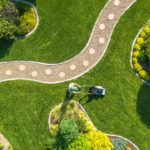Spacing your tomato plants properly is crucial for their healthy growth and abundant yield. Whether you are a beginner or an experienced gardener, understanding the right spacing techniques can make a significant difference in the overall success of your garden. In this article, we will explore the importance of properly spacing tomato plants and provide you with practical information on how to achieve optimal spacing for your plants.
Why spacing is important for tomato plants
Proper spacing between tomato plants allows for better air circulation, sunlight penetration, and reduces the chances of diseases, pests, and fungus. It also ensures that each plant receives an adequate amount of nutrients and water, preventing competition and promoting healthy growth.
Here are some key reasons why spacing is vital for your tomato plants:
- Maximum sunlight exposure for photosynthesis
- Sufficient air circulation to prevent diseases
- Easy access for harvesting and maintenance
- Enhanced growth and root development
- Efficient use of water and nutrients
Determining the ideal spacing between tomato plants
The spacing between tomato plants depends on various factors, including the type and variety of tomatoes you are growing, the available gardening space, and the support system you plan to use. Here are general guidelines for determining the ideal spacing between tomato plants:
- Determining the variety: Depending on whether you are growing determinate or indeterminate tomatoes, the spacing can differ. Determinate varieties usually require less space, while indeterminate varieties need more room for sprawling growth.
- Read plant label or seed packets: Carefully read the label or seed packet of the tomato variety you are planting. It often provides specific instructions on spacing requirements, considering the average size and growth habit of the plant.
- Consider mature plant size: Estimate the mature size of the tomato plant by researching the variety or consulting experienced gardeners. This will help you determine appropriate spacing for each plant.
- Account for support structures: If you plan to use stakes, cages, or trellises for supporting your tomato plants, consider the space needed for these structures while spacing your plants. Account for the width and height of the support system to avoid overcrowding.
- Soil fertility and nutrient availability: If you have nutrient-rich soil, you may need to space your tomato plants slightly farther apart to prevent competition for nutrients. In contrast, if your soil is less fertile, closer spacing can help conserve moisture and nutrients.
Spacing techniques for tomato plants
Once you have determined the appropriate spacing for your tomato plants, it’s time to implement the techniques that will ensure healthy growth and maximum yield. Here are some effective spacing techniques to consider:
- Single-row spacing: Leave a distance of 24-36 inches between each tomato plant in a single row. This spacing allows adequate room for air circulation and maintenance.
- Wide-row spacing: For wider rows, increase the spacing between plants to 36-48 inches. This technique works well for sprawling indeterminate varieties or if you have limited gardening space
- Vertical spacing: If you are utilizing vertical support, such as cages or trellises, your spacing can be closer. Space plants 12-18 inches apart if they will be trained to grow vertically.
- Diagonal spacing: Diagonal spacing is a useful technique where instead of planting in straight rows, you stagger the plants in a zigzag pattern. This allows for better air circulation and light exposure.
- Intercropping: Consider intercropping tomatoes with companions like marigolds, basil, or onions. These plants can help deter pests and maximize space utilization.
Proper spacing of tomato plants is essential for maximizing their growth potential and ensuring a bountiful harvest.
By understanding the importance of spacing, considering plant varieties, support structures, and implementing effective spacing techniques, you can create an ideal growing environment for your tomatoes.
Remember, each plant needs sufficient room to thrive and access to sunlight, air, and nutrients. So take the time to plan your spacing strategy and watch your tomato plants flourish!






